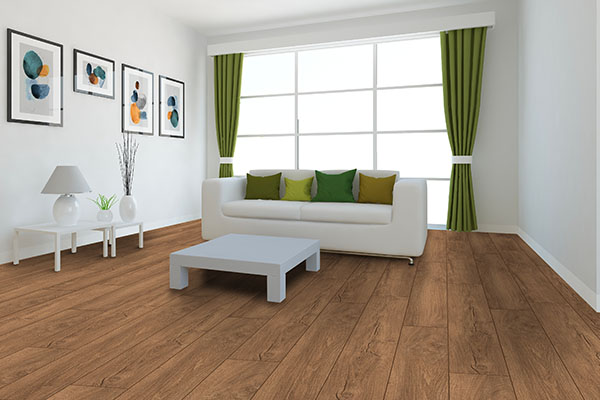When it comes to flooring, the width of your planks makes a big difference in the look and feel of your home. Wide plank and narrow strip flooring each offer their own distinct style, vibe, and functionality. Whether you’re drawn to a rustic countryside aesthetic or a classic, traditional look, the choice between wide and narrow planks isn’t just about looks. It’s about how well it fits your home’s space, decor, and daily needs.
Curious about which one will work best for your home? Here’s a breakdown of the key differences and tips to help you decide.
Wide Plank Flooring: Spacious and Luxurious
Wide plank flooring generally refers to boards that are 5 to 12 inches wide. It’s become a popular choice in recent years for its bold, modern look, but its roots are in historic homes, where wide planks were often used due to their timeless appeal.

Pros of Wide Plank Flooring:
A Clean, Spacious Look
Wide planks reduce the number of visible seams on the floor, creating a cleaner, more open look. This can make a small space feel bigger or add a luxurious touch to larger rooms.
Showcasing Nature’s Beauty
With fewer planks, the wood’s grains, patterns, and textures have more room to shine. This makes wide planks ideal for homeowners who love the natural beauty of wood.
Works Well With Modern, Rustic, or Farmhouse Decor
Wide planks pair beautifully with cozy, rustic designs or sleek, minimalist decor. If you’re aiming for a farmhouse vibe or contemporary feel, they’re a match made in heaven.
Considerations for Wide Plank Flooring:
Cost
Wide planks generally cost more than narrow ones because they require larger pieces of wood.
Expansion and Contraction
Due to their size, wide planks are more prone to expanding and contracting with changes in humidity. If you live in an area with fluctuating weather, this might mean more maintenance over time.
Best for…
Wide plank flooring works great in homes with open floor plans or larger spaces. It’s also ideal if you want your floors to make a statement and evoke natural warmth without being overly busy.
Narrow Strip Flooring: Traditional and Versatile
Narrow strip flooring, typically around 2 to 3 inches wide, is perfect for classic, polished aesthetics. It’s been a staple in American homes for decades and is still a go-to option for many homeowners.
Pros of Narrow Strip Flooring:
Classic and Timeless Appeal
Narrow planks offer a refined, traditional look that never goes out of style. It’s a great choice if you’re aiming for a clean-cut, classic design.
Adds Visual Depth
Because of their smaller size, narrow strips create a more detailed, intricate pattern. This can make spaces feel more dynamic and cozy.
More Stable
Narrow planks are less prone to issues like cupping or gapping since they’re smaller and adapt better to changes in humidity.
Considerations for Narrow Strip Flooring:
Lines Can Feel Busy
The additional seams in narrow flooring can make a space feel more compact, so it might not work well in very small or cluttered rooms.
Can Blend In Rather than Stand Out
Unlike wide planks, narrow strips don’t make as bold of a style statement.
Best for…
Narrow strip flooring suits smaller homes or rooms, as the pattern adds texture and coziness without overwhelming the space. It’s also a great fit if you’re going for a timeless or traditional design.
Choosing the Right Fit for Your Home
Ultimately, the choice between wide plank and narrow strip flooring comes down to your home’s size, style, and your personal preferences.
For Larger Spaces: Wide planks help rooms look even more expansive and luxurious. They pair beautifully with open-concept floor plans or rustic farmhouse designs.
For Smaller Homes: Narrow strips lend texture and depth that enhance the personality of compact spaces, making them feel dynamic without being overcrowded.
For a Modern Look: Wide planks with a light stain or matte finish add an updated, airy feel to any home.
For a Traditional Vibe: Narrow strips in a rich, warm tone help create that classic, timeless look.
Whichever style you choose, keep materials and finishes in mind. Whether you go with hardwood, engineered wood, or luxury vinyl, ensure the color, texture, and overall vibe of your flooring complement the rest of your home’s design.
With the right planks, you’ll have a floor that not only feels perfect underfoot but also enhances the beauty and functionality of your home.

